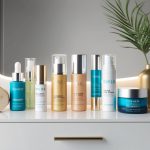How to Repair Damaged Hair: Expert Tips for Stronger, Shinier Locks
Moisturizing and Hydrating Strategies
Moisture is essential for repairing dry, damaged hair and restoring softness, shine, and strength.
Intense hydration and targeted treatments can make a visible difference in hair health.
Hydration with Hair Masks
Hair masks deliver deep, concentrated moisture to strands, reaching areas that everyday conditioners often miss.
They typically contain nourishing ingredients such as coconut oil, aloe vera, honey, and shea butter, which help to replenish moisture and repair the hair cuticle.
For dry or damaged hair, applying a hydrating hair mask once or twice a week can significantly improve manageability and shine.
When choosing a mask, look for formulas specifically labeled for damage repair or intense hydration.
Avoid products that contain sulfates and parabens, as these can strip moisture from the hair.
After shampooing, apply the mask evenly from mid-lengths to ends, leaving it on for 10–20 minutes before rinsing thoroughly.
For deeper conditioning, cover hair with a shower cap to trap heat and help ingredients penetrate more effectively.
See more about the benefits of hair masks at this expert overview.
Using Hair Oils for Moisture and Shine
Natural hair oils like coconut oil, argan oil, and olive oil are highly effective for locking in moisture and adding shine to dry, brittle hair.
These oils mimic the scalp’s natural sebum, creating a protective barrier that prevents further moisture loss and repairs the hair shaft.
Regular oil treatments are especially beneficial for hair exposed to repeated heat styling, coloring, or harsh weather conditions.
To use, warm a few drops between the palms and work through damp or dry hair, focusing on mid-lengths and ends.
For deeper hydration, apply oil as an overnight treatment and wash it out in the morning.
Choosing lightweight oils will help prevent buildup and keep hair feeling soft, not greasy.
Oils not only restore shine but also protect against split ends and breakage.
More insights are provided in this guide on repairing hair with natural oils.
Repairing and Strengthening Hair
Repairing damaged hair involves rebuilding the internal structure and protecting the outer layers to restore strength and shine.
Focusing on science-backed hair repair products and targeted treatments helps fix damaged hair effectively and prevents further breakage.
Bond Builders and Ceramides
Bond builder treatments are designed to repair broken disulfide bonds inside hair strands that are commonly damaged by coloring, heat styling, and chemical services.
These products work at a molecular level, helping restore hair’s internal structure for lasting strength and resilience.
Many bond builder formulas, such as those containing bis-aminopropyl diglycol dimaleate, are used in salons and at home to revive lifeless hair.
Salon-quality options target severe breakage, while home-use versions can maintain results between appointments.
Regular use of these treatments, like weekly masks, promotes stronger, smoother hair over time.
Ceramides are lipids naturally found in the hair cuticle.
Adding ceramides to a damaged hair routine helps seal the hair shaft, reduce porosity, and reinforce the cuticle’s protective barrier.
This reduces moisture loss and keeps the hair manageable and shinier.
For best results, search for leave-in products and conditioners rich in ceramides.
| Bond Builder Benefits | Ceramide Benefits |
|---|---|
| Repairs internal bonds | Seals hair cuticle |
| Increases hair strength | Reduces moisture loss |
| Prevents breakage | Enhances shine and softness |
Incorporating Keratin Protein Treatments
Keratin protein treatments are widely recognized as some of the best hair treatments for damaged hair.
Keratin is the primary structural protein in hair, which breaks down from heat, chemical processing, or environmental exposure.
Topical keratin products replenish lost protein, rebuilding weakened areas and helping to fix damaged hair.
These treatments are available as deep conditioners, masks, or leave-in serums.
For significant repair, a salon treatment may deliver more noticeable, longer-lasting results.
At-home products, such as keratin-rich conditioners and repair masks, can help support ongoing hair health when used weekly.
When incorporating keratin protein into a hair care routine, it is important not to overuse these treatments.
Too much protein can lead to hair feeling stiff or brittle.
Most experts recommend alternating protein treatments with hydrating therapies to maintain balance and achieve optimum shine and strength.
For additional advice, refer to tips from hair repair experts for using masks and protein treatments.



